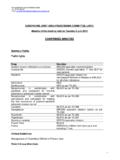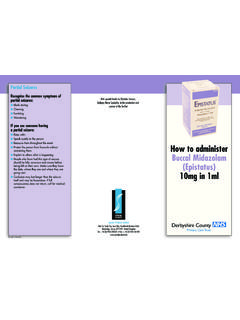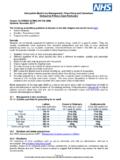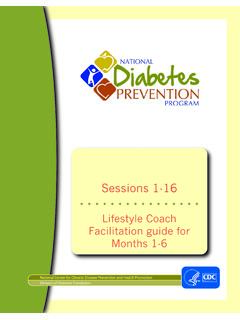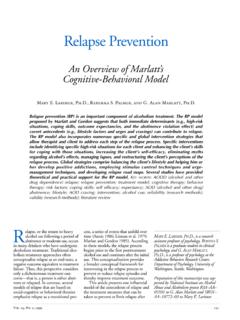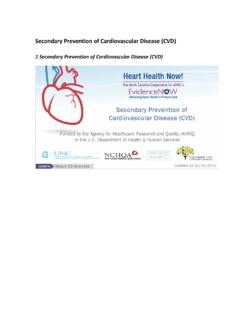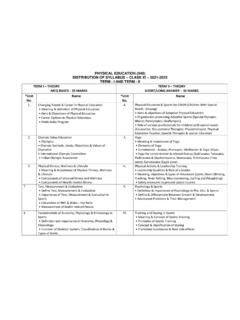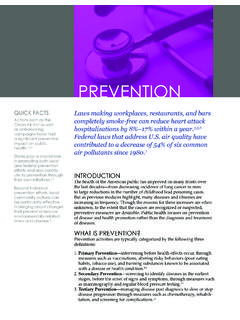Transcription of DERBYSHIRE JOINT AREA PRESCRIBING COMMITTEE (JAPC ...
1 Guidance on the prevention , diagnosis & management of vitamin D deficiency in primary care Page 1 of 11 First Produced: May 2012 Reviewed: July 2019 Next Review date: June 2022 GUIDANCE ON THE prevention , DIAGNOSIS AND management OF vitamin D deficiency IN PRIMARY CARE This guidance is based on national recommendations from NICE (PH56), the National Osteoporosis Society, and the government s Scientific Advisory COMMITTEE on Nutrition. Summary Prescribers should note local variation of definition.
2 For example NICE classify low vitamin D as <25nmol/litre of 25 hydroxyvitamin D whereas DERBYSHIRE use <30nmol/litre by local endocrinologist agreement. Almost a fifth of the UK population is estimated to have a low vitamin D status. For this reason: o Routine screening of vitamin D blood levels is not recommended. o lifestyle advice and use of over the counter vitamin D preparations are recommended for prevention . (See appendix 1 for patient information) o The government Healthy Start Scheme offers free vitamin supplements (containing vitamin D) to eligible patients.
3 Commercial vitamin supplements are available to buy for those people not eligible for the Healthy Start Scheme. (see appendix 2) o PRESCRIBING of vitamin D preparations should be reserved for treatment of patients with symptoms AND diagnosed deficiency , usually as a short course of treatment. vitamin D products should be prescribed by its brand name so that the most cost effective licenced product is dispensed. Only use liquid options if capsules or tablets are not suitable.
4 Use a suitable licensed alternative if preferred products are not available. Local formulary choice for treatment of deficiency : Daily regime Weekly regime Adult Strivit D3 20,000 IU daily for 15 days (Contains Gelatin. Gelatin in capsule is Kosher and Halal compliant. Suitable for people with nut allergy) InVita D3 50,000 IU weekly for 6 weeks Children Thorens 10,000 unit/ml oral drops 1-5 months: 3,000 IU (15 drops= ) daily 6 months- 11 years: 6,000 IU (30 drops= ) daily 12-17 years: 10,000 IU daily (50 drops =1 ml) daily Course length 8-12 weeks Monitoring following a treatment course for deficiency o Adults- check calcium, phosphate & ALP after six weeks.
5 Only repeat vitamin D level if symptoms persist. o Children- check calcium, phosphate, ALP and PTH at 1 month (or 1 week if symptomatic hypocalcaemia. Repeat 3 monthly until treatment stopped. DERBYSHIRE JOINT AREA PRESCRIBING COMMITTEE (JAPC) JAPC continues to support the PRESCRIBING of high-dose vitamin D, usually as a short-course treatment, for the correction of diagnosed deficiency for adults and children. For all other vitamin D requirements, the patient is encouraged to make lifestyle changes such as increasing dietary intake of vitamin D, increasing safe sun exposure and to purchase a supplement over the counter from a local pharmacy, health food shop or supermarket.)
6 See position statement on the PRESCRIBING of vitamin D for further advice Local Patient information leaflet (available in several languages) Guidance on the prevention , diagnosis & management of vitamin D deficiency in primary care Page 2 of 11 First Produced: May 2012 Reviewed: July 2019 Next Review date: June 2022 Algorithm for diagnosis and management of vitamin D deficiency in primary care Population screening by measuring vitamin D levels is unnecessary (see section on diagnosis for more information).
7 Yes Symptoms of rickets or osteomalacia? (See table 1 p5) See Table 2 Investigations: U&Es, LFTs, calcium, phosphate, PTH and 25-OH vitamin D No investigation required Offer lifestyle advice on safe sun exposure & diet Recommend OTC colecalciferol supplement 400 IU (10 microg) per day from age 1 (note 3) Yes Vit D <30nmol/l: Prescription (note 1) Vit D 30-50nmol/l: lifestyle advice on safe sun exposure and diet & OTC supplements (note 2) No Yes Referral to specialist indicated?
8 Children under 1 year Children with biochemical rickets or raised PTH Renal disease (CKD 4&5) Atypical biochemistry- including hypercalcaemia Failure to respond to treatment after 3 months Short stature / skeletal deformity Focal bone pain Unexplained severe deficiency Unexplained weight loss (See referral criteria p9) Refer GP to prescribe as per table 3 (p6) Risk factors for vitamin D deficiency ? (See table 2 p5) See Table 1 Vit D >50nmol/l: Normal- general advice on prevention No Note 1 Cut off for high dose vitamin D prescription Symptomatic deficiency is unlikely when 25(OH)D is greater than 30 nmol/l but there is no clear threshold.
9 If symptoms are strongly suspected to be vitamin D related it is reasonable to offer high dose treatment when levels are between 30 and 35 nmol/l. Note 2 Prescription of vitamin D occasionally indicated with Specialist advice ( in preparation for parenteral treatment of osteoporosis Note 3 Daily requirements are microg (340 IU- 400 IU) per day for breastfed babies from birth to 1 year of age. Babies receiving more than 500ml infant formula per day do not require supplements. Guidance on the prevention , diagnosis & management of vitamin D deficiency in primary care Page 3 of 11 First Produced: May 2012 Reviewed: July 2019 Next Review date: June 2022 Diagnosis and management of vitamin D deficiency in primary care Contents: 1: vitamin D physiology p4 2.)
10 Diagnosis p4-5 Investigations vitamin D levels 3: management of vitamin D deficiency p6-7 4: management of vitamin D insufficiency p8 5: prevention of vitamin D deficiency p9 6: Exceptionalities p9 7: Referral p10 8: References p10 Appendix 1: Patient information: national examples p11 Appendix 2: Healthy Start vitamins/OTC preparations for children p11 Document updates Date Guidance on the prevention , diagnosis & management of vitamin D deficiency in primary care Page 4 of 11 First Produced: May 2012 Reviewed: July 2019 Next Review date: June 2022 Introduction vitamin D is essential for skeletal growth and bone health.
